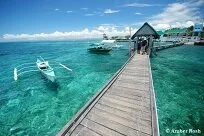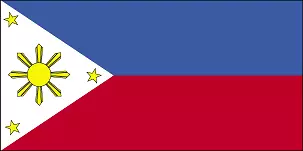As the Age of Exploration began and foreigners started to arrive to the islands of the Philippines, their arrival was fiercely resisted. Numerous explorers arrived and soon after left; the world continued to move forward without the Filipinos, but this changed when the Spanish finally settled the region.
The Spanish introduced Catholicism to the islands and this became the new base for the quickly changing Filipino culture. Catholicism changed the people as they united under this new religion and turned from their violent ways in the past to a more peaceful path forward. The Spanish also opened the doors of the country as outside influences entered the country, altering the food, ethnicity, and culture.
In about 1900 the United States took control over the Philippines and they began to focus on economic growth on the islands, something that was poorly received as the people demanded independence, tapping back into their past roots, clinging to independence and self-rule. From this time until the end of World War II the islands were occupied by the Americans and Japanese. This foreign occupation provoked greater desire for self-rule as their identity was also solidified and the people united across islands. The people began to identify as one people instead of as members of their island, however this growth in pride pushed away the people of some of the southern islands, who are primarily Muslim.
Today the people continue to gain a stronger identity as the Muslim population continues to argue the definition of what it means to be "Filipino" or seek independence. In addition to this, the country has struggled to grow economically as urbanization is increasing quickly since cities seem to be the only place where jobs are available. The people are moving away from farming and fishing for industrialized jobs in the cities, forever altering the culture. As this is occurring, there is a growing divide among the rich and poor.
Despite the many differences among the Filipinos, the people tend to be generous and kind, opportunistic and hard-working, and always giving. Despite these great characteristics, poverty rules the lives of most of the people and desperation can overcome the positives. In many ways, the people are still seeking a uniform culture and identity as those moving to the cities arrive without jobs, housing, or enough money to survive in many cases. The future of the Philippines seems uncertain, but ever-evolving.
Articles
| |

Top 5 Places to Travel to in the Philippines
By Amber Rosh
July 28, 2014
There are many destinations in the Philippines worth visiting. Here's a list of my favorites:
Boracay: This palm-studded tropical isle is usually an address for sun buffs. The wonderful stretches of white-sand beaches and superior blue seas are magnetizing... Continue Reading
|
|
 The flag of the Philippines includes the color blue for peace and justice, red for courage, and a white triangle to represent equality. The sun's rays represent the eight provinces that initially sought independence from Spain and the three stars are for the three major geographic divisions in the country: Luzon, Visayas, and Mindanao.
The flag of the Philippines includes the color blue for peace and justice, red for courage, and a white triangle to represent equality. The sun's rays represent the eight provinces that initially sought independence from Spain and the three stars are for the three major geographic divisions in the country: Luzon, Visayas, and Mindanao.
Name: Republic of the Philippines
Independence: June 12, 1898 (from Spain) & July 4, 1946 (from the U.S.A.)
Capital: Manila
Currency: Philippine Peso
Population: 105,720,644 (2013 estimate)
Ethnicity: Tagalog, Cebuano, Ilocano, & others
Language: Filipino (Tagalog) & English
Religion: Roman Catholic